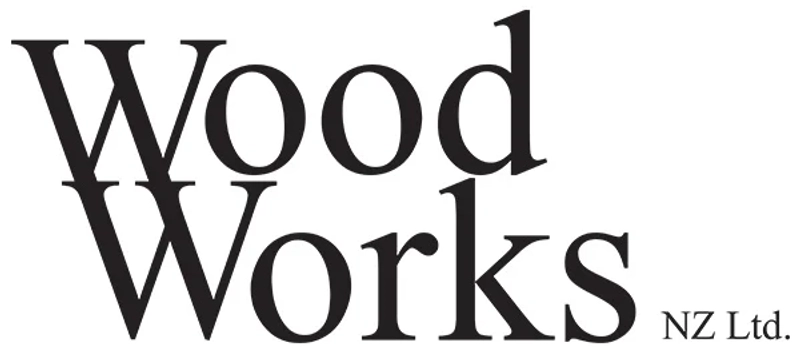Industrial Engineering 中的 Auckland 事件


WoodWorks
WoodWorks: A Dynamic Platform for Advancing Timber Construction
In an era where sustainability, innovation, and resource efficiency shape the built environment, WoodWorks emerges as a strategic event dedicated to expanding the use of wood in commercial and multi-residential buildings. Far more than a conventional trade show, WoodWorks acts as a professional convergence point for architects, engineers, developers, and construction firms who believe in the potential of timber to redefine modern architecture.
The core of the event lies in its emphasis on mass timber, BIM integration, and real-world project applications. Through carefully curated presentations, site visits, and interactive case studies, attendees gain insight into not only what’s possible with wood but how it’s already being done at scale around the world.
Whether you’re involved in early-stage design, structural engineering, building envelope solutions, or construction management, WoodWorks offers tailored content that speaks to your role in the evolving timber ecosystem.
The Significance of Timber in the Built Environment
Wood has re-emerged as a dominant material in architectural innovation, particularly due to its low carbon footprint, aesthetic warmth, and structural flexibility. At WoodWorks, this resurgence is not merely discussed — it is demonstrated through the lens of real buildings, completed or in-progress.
Across commercial, civic, educational, and residential projects, mass timber is now being implemented in ways that were unimaginable a decade ago. The event showcases how engineered wood products—like cross-laminated timber (CLT), glue-laminated beams (glulam), and laminated veneer lumber (LVL)—are driving a shift away from concrete and steel, especially in mid-rise and high-rise developments.
Attendees of WoodWorks gain not just technical information but a full understanding of design strategies, code navigation, material sourcing, and long-term performance of wood structures.
From Vision to Practice: Real Case Studies That Inspire
What sets WoodWorks apart is its commitment to real-world knowledge sharing. The event’s programming includes live presentations and detailed case studies of projects that pushed the boundaries of timber use in commercial construction.
Examples span:
Office towers constructed entirely with CLT
Multi-residential housing designed around passive wood systems
Hybrid projects blending steel with mass timber frameworks
Retrofitted commercial buildings using timber inserts for aesthetic and thermal upgrades
Each project is presented by a team of professionals—often the architect, engineer, and builder—offering a multi-perspective look at what went right, what had to be adapted, and how innovation emerged from challenges. These sessions are not sales pitches; they are open, instructive, and deeply valuable to professionals in the trenches.
Site Visits: Where the Learning Becomes Tangible
An essential feature of WoodWorks is the chance to visit active or completed mass timber sites. These guided tours allow participants to see construction methods up close, examine details of assembly, and ask questions to the project teams behind them.
Observe mass timber installation in-progress
Understand hybrid connection techniques with steel or concrete
Examine how fire safety and acoustics are handled in timber structures
Learn how digital models (BIM) translate into real-world results
See how prefabrication and modular systems reduce construction timelines
These tours bridge the gap between theory and execution and are often cited by past attendees as the most valuable component of the event.
Digital Innovation and Timber: BIM at the Center
As timber becomes more central in large-scale construction, the role of Building Information Modeling (BIM) becomes equally critical. WoodWorks places a strong emphasis on digital workflows that ensure precision, reduce waste, and allow for seamless coordination between disciplines.
Discussions around BIM include:
Creating digital twins of timber buildings
Clash detection in prefabricated timber modules
Optimizing structural layouts using parametric modeling
Streamlining approval processes with accurate visual simulations
For architecture and engineering firms, mastering BIM in the timber context is now not optional—it’s a competitive necessity. WoodWorks provides both the theoretical understanding and the software-specific knowledge to operate effectively in this space.
Who Should Attend WoodWorks
Professionals across multiple disciplines will find unique value at WoodWorks. The event is intentionally cross-functional, encouraging collaboration across traditional silos in the AEC industry.
Those who benefit most include:
Architects working with wood or planning to incorporate timber into future designs
Structural and civil engineers exploring alternatives to steel and concrete
Developers seeking sustainable and fast-track construction solutions
Project managers responsible for coordination and delivery timelines
Code consultants and fire safety experts analyzing timber’s regulatory context
Key Themes and Benefits of Attending
Attending WoodWorks delivers strategic advantages not just in product knowledge, but in business outcomes:
Exposure to the newest technologies in wood-based construction
Networking with leading mass timber manufacturers and design firms
Access to on-the-ground insights from major timber projects
Practical training in BIM use for timber workflows
Awareness of evolving codes, permits, and green certifications
Here’s what WoodWorks attendees consistently highlight as most valuable:
Professional development through deep-dive sessions and practical workshops
Connection building with a high-caliber group of specialists
Technology exposure that translates directly to project innovation
Confidence in adopting timber for larger, risk-managed builds
WoodWorks as a Movement, Not Just a Conference
WoodWorks is more than an event—it is a movement within the global construction industry, promoting wood not as a niche option but as a mainstream material for the future. Its growing popularity reflects a paradigm shift where environmental responsibility and technological precision merge.
The impact of the conference continues long after the final session ends. Many attendees report that what they’ve learned and who they’ve met has directly shaped future projects, proposals, and even career trajectories.
As wood moves into new domains of commercial construction, WoodWorks remains the annual anchor point where ideas become action, and vision becomes reality.


EMEX
作为制造业和工业电子领域创新和技术进步的巅峰之作,EMEX 是新西兰工业格局的核心。这个享有盛誉的国际展览每年举行一次,为展示重新定义现代工业生产的生产力和效率的最新突破奠定了基础。
EMEX 有望展示制造、工程、机械、机器人和工业电子领域的尖端技术和创新。来自新西兰及其他地区的150多家领先制造商和供应商齐聚一堂,推出他们的最新产品,吸引了4000多名渴望探索和采用这些进步的行业专业人士。
从不起眼的 8 号电线到尖端的太空货运技术,EMEX 体现了新西兰制造实力的演变。这证明了美国在突破工程和工业技术可能性界限方面的聪明才智和专业知识。
除了展位之外,EMEX 还为网络、知识共享和业务增长营造了一个成熟的环境。这里是思想汇聚、合作伙伴关系蓬勃发展和确定行业趋势的地方,这使其成为制造和工程领域任何参与者不可或缺的活动。
随着EMEX不断发展和创新,它重申了其作为新西兰首屈一指的贸易活动的地位,在这里,创新与机遇相遇,塑造工业技术的未来。